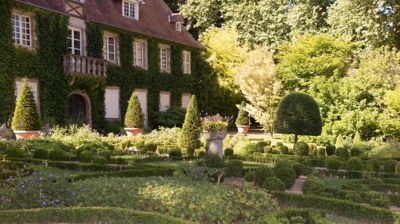The Beauty and Benefits of Native Landscape Design
Create an ecologically sound exterior design with native landscaping. Planting native species adds a touch of natural beauty to your surroundings while promoting a healthy environment. At Heroes Lawn Care, our lawn experts nurture native landscapes all the time. Let’s discuss why native landscapes can provide the most eco-friendly solution in lawn care.
Why Native Landscaping Matters?
By integrating native trees and plants, you can lessen your carbon footprint by reducing maintenance and promoting biodiversity, contributing to the preservation of your local ecosystem. Native landscaping can reduce your annual upkeep while providing food and shelter for wildlife found in your area.
Understanding The Importance Of Plant Selection
Native plants require minimal maintenance and blend beautifully with their surroundings. When tending to your professional landscape, try to identify invasive plant species that might endanger biodiversity on your property.
Native Plants
These plants have adapted to your local soil, climate, and wildlife, making them suited for your environment. Native plants provide food and shelter for local wildlife while acting as an ornament. The top five native plants in America include:
- American Cranberrybush: Thrives in the northern US and Canada, especially in the Northeast and Great Lakes. It benefits local ecosystems by providing food and shelter in forests and wetlands.
- Coneflower: Spanning central to eastern North America from the Great Plains to the Atlantic, and thriving in the prairies and woodlands of Texas. The coneflower plays a vital role in attracting pollinators and adding a splash of vibrant color to landscapes.
- Lobelia: Species such as the Great Blue Lobelia and Cardinal Flower, native to the eastern and central US, are also found in Texas. These plants enrich habitats for pollinators, contributing to the biodiversity of these regions.
- White Sage: Native to southern California and Baja California, Mexico, White Sage dominates in dry coastal and chaparral areas, playing a key cultural and ecological role.
- American Wintergreen: Occupies the forest floors of eastern North America, from Newfoundland to Alabama. It prefers acidic soil and is known for its evergreen leaves and wintergreen scent.
Invasive Plants
To protect your native landscape, you should find and remove invasive plants. These types of plants reproduce rapidly and will harm your native landscape. The top five most invasive plant species in America include:
- Purple Loosestrife: Originally from Europe, Asia, and northwest Africa, this invasive plant has spread across North America, especially in wetlands and along waterways, disrupting local ecosystems.
- Japanese Honeysuckle: Native to East Asia, Japanese honeysuckle has become invasive in the US, particularly in Texas and the Southeast, where it overtakes forests and other areas, smothering native plants with its rapid growth.
- Japanese Barberry: From Japan and eastern Asia, Japanese barberry is invasive in the Northeast and Great Lakes, thriving in various habitats and outcompeting local flora.
- Norway Maple: European and Western Asian in origin, Norway maple is planted for its beauty in North America but is invasive in the Northeast and Great Lakes, threatening native forests.
- English Ivy: This plant, from Europe and western Asia, is invasive in the US, especially the East Coast and Pacific Northwest, where it aggressively covers forests, harming trees and undergrowth.
Planning Your Native Landscape Design
Planning your native landscape design allows you to highlight the natural beauty of your region. It also prevents mistakes from occurring during the planting process. Before you start planting, follow these steps.
Step 1: Assess Your Site
Check your property’s topography, soil quality, sunlight exposure, and drainage. These four factors will determine which native plants suit your property and where you should plant them.
Step 2: Design For Function And Aesthetics
Consider the purpose and appearance of the native plants you choose to spruce up your landscape. To select the most appealing plants, examine their color, texture, and shape. You might want to create a mix of flowering plants, trees, and shrubs to make your landscape more engaging and provide food for local wildlife.
Step 3: Incorporating Hardscape Elements
Choose materials that will support and complement your native plants. Integrating hardscape elements into your native landscape design will make your walkways, walls, and patios pop.
Step 4: Creating A Planting Plan
When forming a planting plan, carefully select the right plants for your site and arrange them for maximum visual impact. To create microclimates and reduce water usage, you can organize plants according to their water and sun requirements.
Getting Started With Native Gardening
Increase the sustainability of your outdoor space with native landscaping. By accounting for the following considerations, you can nurture a thriving native landscape that supports local wildlife and requires less maintenance than a traditional garden.
1. Preparing Your Site
Remove any existing weeds and debris before you start planting. Testing your soil's pH level to determine its acidity or alkalinity can help determine your choice of plants. Consider using compost or other organic matter to improve soil quality.
2. Finding Native Plants
Look for healthy, pest-free plants suited to your garden's specific conditions. You can find native plants online or at your local greenhouse. Native plants from your region will enjoy a better chance of surviving and require less maintenance.
3. Planting Techniques
Pick a location where your plant will receive the recommended amount of sunlight. Dig a hole deep enough to accommodate the plant's root ball. Mix in compost and other organic matter to help your plant establish itself. Water the plant thoroughly after planting.
4. Watering And Irrigation
You can use a drip irrigation system or a soaker hose to conserve water and deliver it directly to the plant's roots. Native plants tolerate drought better than non-native plants. But they still need regular watering, especially during the first few months after planting.
Landscape Plant Design Tips
Now that you understand the basics of native gardening, you can move up to landscape plant design. Design your outdoor space using these tips.
Combining Color, Texture, And Seasonal Interest
Selecting different plant colors will make your space vibrant and lively. Incorporating grasses and succulents increases visual interest. You should also consider plants that offer seasonal interest due to color changes in foliage or flowering patterns. Some plants undergo fascinating transformations throughout the year.
Choosing Plants For Different Sun Exposures
Examine the amount of sun exposure in each area of your yard before selecting plants for your landscape. Certain plants flourish under direct sunlight, whereas others thrive better under partial or complete shade. Most homeowners need plants with various sun tolerances to maximize their use of sunny and shady spaces.
Selecting Plants For Different Soil Types
Select plants suited to your soil type to ensure proper growth. Some plants thrive in well-drained soil, whereas others prefer moist or clay soils.
Planting For Wildlife
By choosing plants that provide food and shelter for birds, butterflies, and other wildlife, you can support local ecosystems. Incorporating native plants into your landscape attracts beneficial insects and offers indigenous animals natural refuge from invasive species.
Maintaining Your Native Landscape
Once you have established your native landscape, you must maintain it to prevent all that time and money from going to waste. Taking proper care of your landscape will promote long-term success and provide a welcoming, fragrant environment for friends and family.
Keeping Your Plants Healthy And Beautiful
Maintain your landscape with natural pest control methods, such as companion planting. You can also introduce beneficial insects to keep your plants healthy and vibrant. Make sure you afford them proper nutrition through fertilization.
Ensuring Nutrient Balance And Plant Health
You should keep your soil balanced to ensure your plants receive the correct amount of nutrients. You can achieve balance by adding organic matter to your flower beds, such as compost.
Prevention And Management Strategies
A proactive approach will help you prevent and manage pests and diseases. You should monitor your plants for signs of problems and implement natural prevention methods like mulching, which reduces fungal pathogens.
Planning For Future Growth And Adaptation
Choose plants according to your long-term goals. Then, continually reassess your landscape design and make adjustments based on your findings. This process will help your plans for future growth and the adaptation of your landscape.
What Are The Seven Principles Of Landscape Design?
Applying the seven principles of landscape design will help you plan your outdoor space. Find landscape design’s seven principles below.
1. Unity
Unity takes different design concepts and organizes them in a visually appealing way.
2. Scale
Small-scale plants create a peaceful, calming ambiance. Large-scale plants offer dramatic effects.
3. Balance
Formal balance gives a sense of stability, grandeur, and respectability by making the left and right sides identical. On the other hand, informal balance creates interest, motion, and liveliness by varying the types of plants from left to right.
4. Simplicity
Achieving simplicity requires repetitive, predictable plant selection and location.
5. Variety
Variety refers to plant diversity and contrasts in form, texture, and color to avoid monotony.
6. Emphasis
When we view a landscape from any angle, our brains expect to see varying degrees of dominance and subordination from various elements to ascertain a focal point.
7. Sequence
Use the deepest shades and most vibrant hues as the center of attention. Placing warm and cool colors in opposition to one another creates more of an impact than planting them in a series.
FAQs
What Should I Do First When Landscaping?
The first thing you should do when landscaping is devise a plan. Start by evaluating your landscape’s current features and deciding which ones you want to keep. Consider your yard's slope, soil type, sun exposure, and drainage to determine which plants and hardscape elements will work.
How Do I Make My Native Garden Look Nice?
You can make your native garden look nice by planting strategically. Placing taller plants at the back of your garden and shorter plants at the front will give your garden a sense of depth and make it look more spacious. Mixing different colors and textures of plants will create additional visual interest.
Why Should Local Residents Use Only Native Plants When Landscaping?
Local residents should use only native plants when landscaping because they have adapted to the area's climate, soil, and wildlife, requiring less water and maintenance than non-native plants.
Maintain Your Native Landscape Design With Heroes Lawn Care
To successfully design your native landscape, you must assess your site, design for both function and aesthetics, incorporate hardscape elements, and create a planting plan. Then, you need to fertilize and irrigate it. After you have designed and created your dream native landscape call our team of maintenance experts at Heroes Lawn Care. Dial (402) 382-4628 to receive an estimate for fertilization, irrigation, and more today!







